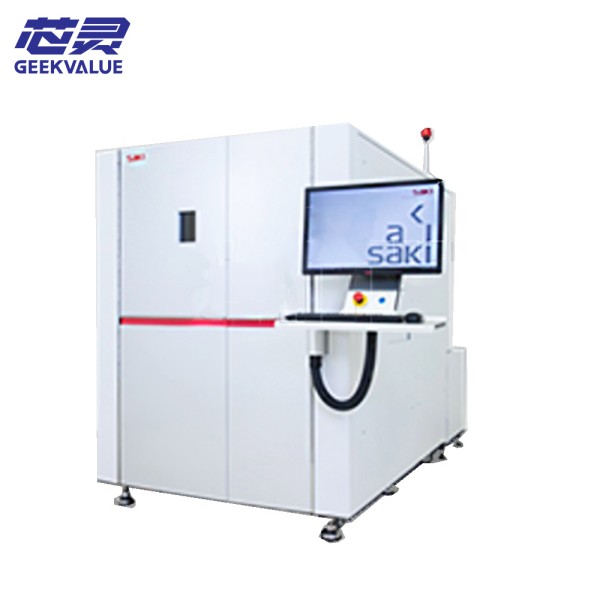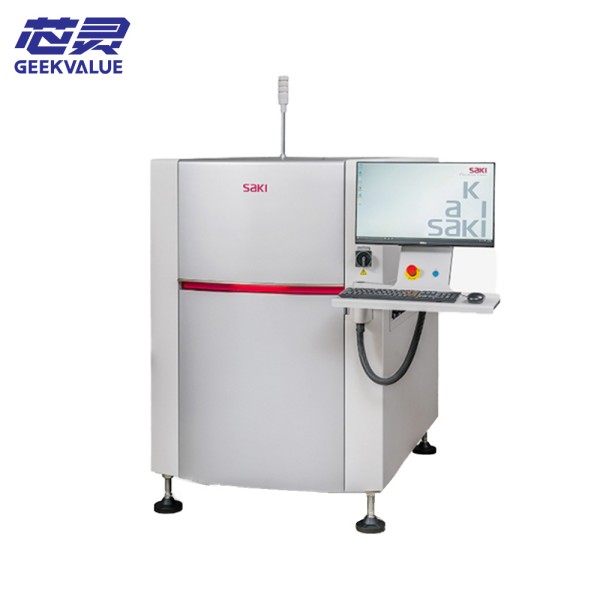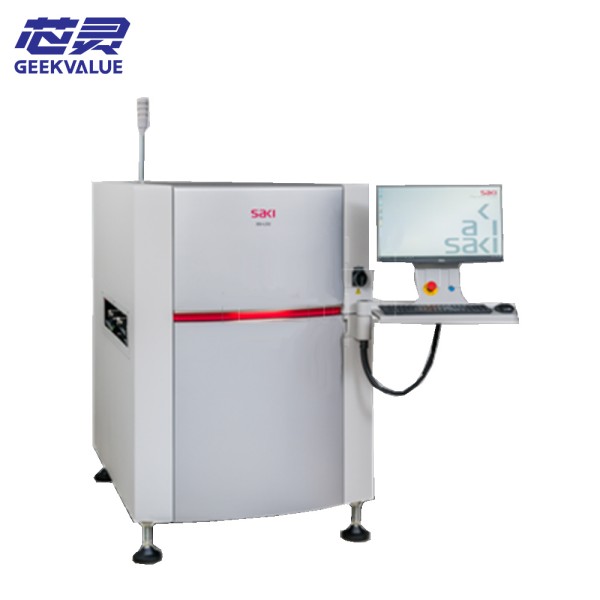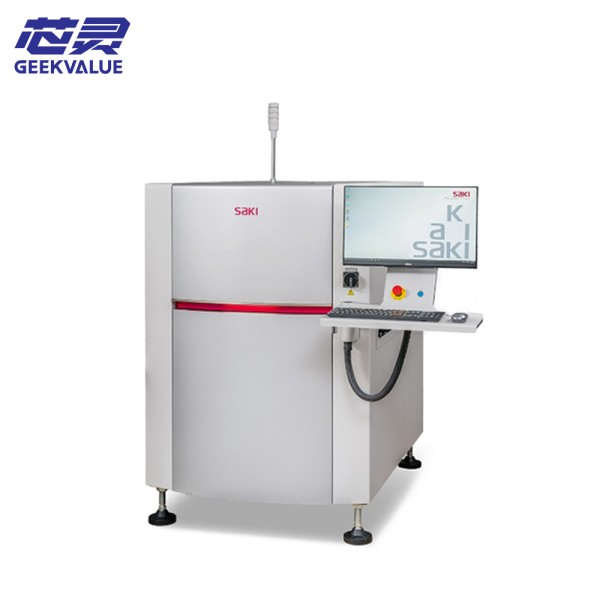The following is a comprehensive introduction to SAKI X-RAY BF-3AXiM200, covering specifications, technical advantages, core features, common errors and handling methods, etc., combined with industry standards and characteristics of similar equipment:
1. Equipment Overview
Model: SAKI X-RAY BF-3AXiM200
Type: 3D X-ray Automatic Inspection System (AXI)
Core Application: High-precision three-dimensional X-ray inspection for PCB assembly (PCBA), especially for hidden solder joints and internal structural defects such as BGA, CSP, QFN.
Technical route: Adopts micro-focus X-ray source + high-resolution flat-panel detector, supports CT tomography (optional configuration).
2. Core Specifications
Item Parameter Details
X-ray Source Closed micro focus, voltage range 60-160kV, power 10W~32W
Detection Resolution Up to 0.5μm (depending on magnification)
Maximum board size 510mm × 460mm (customizable)
Detection Speed 10-30 seconds/field of view (depending on resolution and 3D scanning mode)
3D Imaging Capability Supports tilted CT scanning (angle range ±70°)
Software Platform SAKI X-Ray VisionPro, supports AI defect classification
3. Core Advantages and Features
(1) Technical Advantages
High-precision 3D imaging:
Reconstruct the internal structure of the solder joint through CT tomography, and quantify parameters such as void rate, solder ball volume, and solder tilt angle.
Multi-angle detection:
The tilt scanning function can detect insufficient through-hole filling or sidewall cold solder joints (such as plug-in components).
AI enhanced analysis:
Built-in algorithm automatically classifies defects (such as solder ball cracks, cold solder joints, foreign matter), with a false positive rate of less than 2%.
(2) Application features
Complex package detection:
Applicable to PoP packaging, SiP modules, and automotive electronic power devices (such as IGBT welding quality).
Non-destructive testing:
Internal defects can be detected without disassembly, suitable for failure analysis and reliability verification.
(3) Production line adaptability
Automation integration:
Supports robotic arm loading and unloading, and data interaction with MES system (SECS/GEM protocol).
Flexible configuration:
Optional offline (laboratory analysis) or online (SMT production line embedding).
4. Common error messages and processing methods
Error code Possible cause Solution
ERR-XRAY-101 X-ray tube overheating Pause detection and cool the system; check whether the cooling fan is normal.
ERR-DET-205 Flat panel detector communication interruption Restart the detector; check the cable connection or replace the interface board.
ERR-MOT-304 Motion axis out of limit (mechanical jam) Manually reset the motion module; check the track foreign matter or motor drive.
ERR-SOFT-409 Image reconstruction failed (data loss) Rescan; upgrade software or contact SAKI technical support.
WARN-HV-503 High voltage power supply fluctuation Check the power supply stability; whether the grounding wire is reliable.
5. Typical application scenarios
High-end electronic manufacturing:
Smartphone motherboard (Underfill glue filling detection), 5G RF module.
Automotive electronics:
ECU control board solder joint reliability verification (compliant with AEC-Q100).
Semiconductor packaging:
Wafer-level packaging (WLP), TSV silicon through-hole detection.
6. Maintenance and calibration recommendations
Daily maintenance:
Clean the X-ray window (dust-proof film) every week and calibrate the grayscale value every month.
Life of key components:
The life of the X-ray tube is about 20,000 hours, and the radiation intensity attenuation needs to be monitored regularly.
Safe operation:
Ensure that the equipment shielding door is closed and the radiation leakage meets the IEC 62494-1 standard (≤1μSv/h).
7. Market competitiveness comparison
Comparison items SAKI BF-3AXiM200 Competitive products (such as Nordson Dage XD7600)
Resolution 0.5μm (local magnification) 0.3μm (higher cost)
CT scanning speed Medium speed (taking into account accuracy) Low speed (high-precision mode)
AI function Built-in defect classification Requires third-party software expansion
Price Mid-to-high-end (outstanding cost-effectiveness) High-end (30%~50% premium)
8. User selection suggestions
Recommended selection scenarios:
Production line sampling or laboratory analysis that needs to balance speed and accuracy.
Automotive/medical electronics manufacturers with limited budgets but still need 3D X-Ray functions.
Not recommended scenarios:
Require nanometer resolution (such as chip-level failure analysis) or fully automatic 100% online detection.






